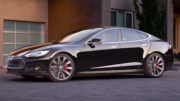No one wants to leave their phone on a charger. That’s pretty obvious. Early cell phones needed to be charged overnight, but by the late 1990s a phone would hold a charge for a week. Unfortunately, smartphones take a lot more power so we were all back to charging every day. I don’t know if we’ll ever get back to that 1-week-on-a-charge level, but the next best thing would be charging the phone in 15 minutes or less.
Quicker than it was
Original smartphones were intentionally limited. Using 5 volt, 1.3 amp power supplies, power trickled into them. This was done for the sake of safety. Batteries tend to swell and get hot if they charge too quickly. Keeping the current flow nice and slow meant that the enclosed batteries in smartphones could stay healthy.
People wanted speed, and manufacturers came back with “quick charge” technology. By adding more current, the phone would charge faster. In some cases, almost eight times the amount of current could go into the phone. As Samsung learned with its Note 7s, though, put the electricity in too fast and things have a tendency to get… explosive.
Enter the electric car
What we’ve seen in the last year or so, though, is a whole different level of charging. While a normal phone gets 7 watts and a quick charging one could get 12-15 watts. At that rate an electric car would take about a year to charge. The typical electric car charger is about 6,600 watts, and Tesla’s superchargers put about 145,000 watts into the car. This means the car gets up and moving again in as little as 30 minutes, which is pretty reasonable. It’s still not enough though. Both Porsche and Tesla are looking at 250,000 watt chargers to get people on the road in half that time.
How can electric cars take so much more energy? They’re designed to actively dissipate the heat that comes in, and give the batteries a little room to swell if need be. A car, being a lot larger than a phone, has a little more room to spare. When an electric car is pulling 145 kilowatts (a kilowatt is 1,000 watts) there are fans and dedicated cooling strips and fins keeping the batteries from exploding, and obviously that’s a good thing.
How can electric car technology benefit phones?
Today’s electric car technology may just trickle down to phones. It’s still not going to be possible to put more airflow into the phone, but one thing I do see is a charger with some active heat dissipation technology built in. If the back of the phone were able to conduct some of the heat down to the charger itself, then the charger could actively dissipate that heat. I’m not sure how that would happen, but I think it’s probably possible. Today’s quick chargers look like little hockey pucks, but the next generation could have heat sinks and fans to help keep your phone cool.
It would probably take about 100 watts to get a phone to a high state of charge in 5 minutes. Today’s phones would blow up with that much power flowing through them, but it’s possible that the next generation might be designed to take that much power when used with an actively cooled charger. I don’t know about you but that sounds good to me!





